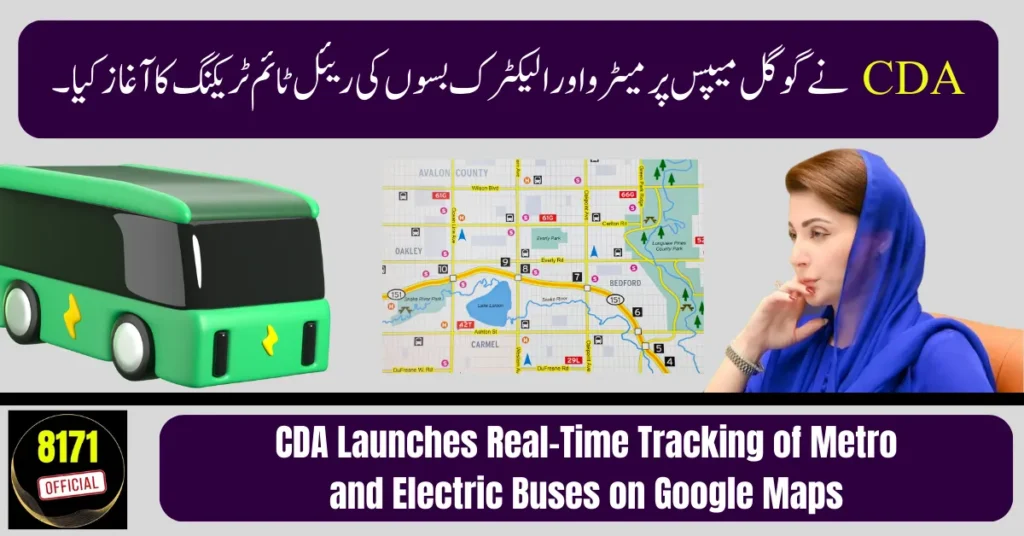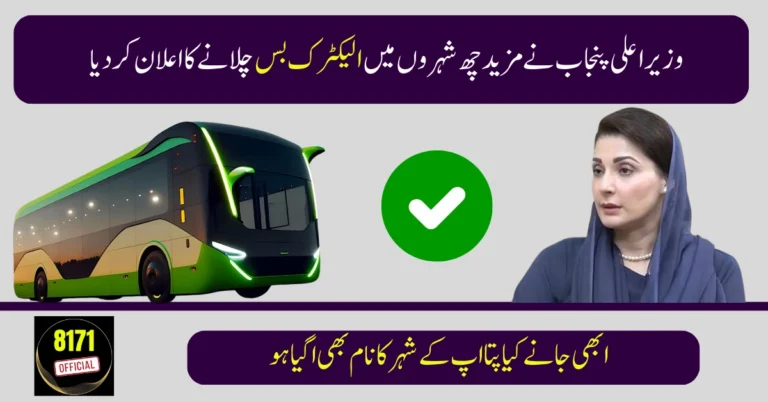If you’ve ever stood at a bus stop in Islamabad or Rawalpindi, unsure when the next metro or electric bus will arrive, you know the frustration. Uncertain timings, long waits, and overcrowded vehicles often make daily commutes stressful. But now, there’s good news: the Capital Development Authority (CDA) has launched real-time tracking of metro and electric buses on Google Maps.
This step is more than just a tech upgrade—it’s a game-changer for Pakistan’s public transport. With live location data available through Google Maps, passengers can plan routes, check bus arrival times, and reduce waiting hassle. The system covers both Metro Bus Services and newly introduced electric buses, combining convenience with sustainability.

Let’s explore how this initiative works, what routes are included, and why it matters for commuters and the environment.
What Is CDA’s Real-Time Tracking System?
The system integrates CDA’s metro and electric buses with Google Maps, allowing commuters to:
- View live bus locations.
- Check estimated arrival times.
- Plan trips with accurate stop-to-stop navigation.
Through the CDA app or directly on Google Maps, users now see real-time updates for buses across Islamabad and Rawalpindi.
How Does It Work on Google Maps?
- Open Google Maps on your phone.
- Enter your destination.
- Select the transit option to view nearby metro or electric bus routes.
- See live timings, delays, and routes in real time.
This integration works just like in advanced transport systems abroad, bringing Pakistan’s capital closer to smart city standards.
Which Routes Are Covered?
Metro Bus Lines Integrated
- Red Line: Saddar – Pak Secretariat
- Orange Line: Peshawar Mor – Islamabad International Airport
- Green Line: Bhara Kahu – PIMS
- Blue Line: Gulberg – Faizabad
- Purple Line: Taramri – Aabpara
Electric Bus Feeder Routes
Launched in July 2024, CDA’s 13 electric bus routes include:
- Faizabad – NUST
- PIMS – Bari Imam
- Police Lines – D-12
- Aabpara – Tramri
Weekend tourist routes also connect PIMS to Daman-e-Koh and Shakarparian, making travel easier for visitors.
Why Is This Important for Commuters?
1. Accurate Tracking
No more waiting blindly—commuters can see bus arrivals and delays live.
2. Better Planning
Google Maps helps connect multiple transport modes smoothly, reducing wasted time.
3. Cost & Time Saving
Efficient planning means fewer missed buses and reduced reliance on costly private transport.
4. Boosting Public Transport Usage
Convenience encourages more people to shift from cars to buses.
A Step Toward Sustainable Transport
By including electric buses in the system, CDA is addressing pollution and climate challenges. Electric transport reduces fuel dependency, lowers carbon emissions, and fits into Pakistan’s broader green mobility goals.
Future of Smart Transport in Islamabad
The CDA’s move reflects a global shift toward AI-driven, real-time transport systems. In the future, we may see:
- Mobile ticketing integrated with the CDA app.
- AI-based traffic management for smoother operations.
- Expanded electric bus routes for rural and peri-urban connectivity.
FAQs
Q1: How can I track CDA buses on Google Maps?
Simply open Google Maps, enter your route, and select the transit option. Real-time bus data will appear.
Q2: Is this feature available only in Islamabad?
Currently, it covers Islamabad and Rawalpindi metro + electric buses, but expansion is expected.
Q3: Do I need the CDA app to use this service?
No. You can check routes directly in Google Maps. The CDA app provides additional features like fare info.
Q4: Which CDA buses are electric?
Currently, 13 feeder routes operate with electric buses, including Faizabad–NUST and PIMS–Bari Imam.
Q5: Does real-time tracking work offline?
No. You’ll need an internet connection to access live bus updates.
Q6: How does this help tourists?
Weekend electric bus routes connect popular spots like Daman-e-Koh and Shakarparian, making sightseeing easier.
Q7: Will this reduce traffic in Islamabad?
Yes. By encouraging more people to use public transport, traffic congestion and pollution are expected to drop.








